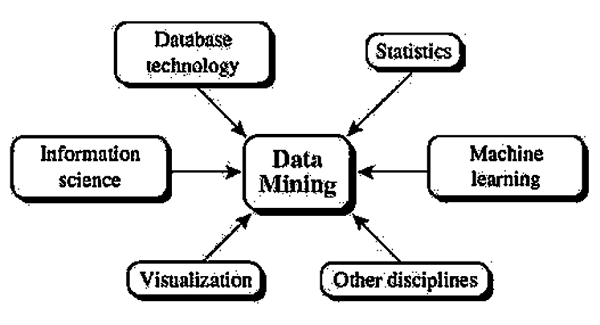Home »
Data Mining
Classification of Data Mining Systems
Data Mining Classification: In this tutorial, we will learn about the classification of data mining systems based on the various fields.
By Palkesh Jain Last updated : April 17, 2023
Overview
Data mining is an interdisciplinary field in which different fields are interconnecting, including database systems, statistics, artificial learning, visualization, and information science. The world of data mining is known as an interdisciplinary one. It requires a set of different fields, such as analytics, database systems, artificial learning, visualization, and information sciences. Data mining system classification lets users understand the system and comply with such systems with their specifications.
Also, methods from other fields, such as neural networks, fuzzy and/or rough set theory, information representation, inductive logic programming, or high-performance computation, may be implemented based on the data mining approach used. The data mining framework can also implement techniques from spatial data analysis, data extraction, pattern recognition, image analysis, signal processing, computer graphics, depending on the types of data to be mined or on the specified data-mining program.

Data Mining Systems Classification
A data mining system can be classified into the following −
- Database Technology
- Statistics
- Machine Learning
- Information Science
- Visualization
- Other Disciplines
Following points are describing data mining classifications -
1. Classification according to the form of mined databases
A data mining method can be graded according to the type of mined databases. It is possible to distinguish database systems according to various parameters (such as data models or data types or programs involved), each of which may include its own technique of data mining. Accordingly, data mining programs can be categorized accordingly.
2. Classification according to the forms of information derived
Data mining systems can be classified by the kinds of information they gain, that is, based on functionalities of data mining, such as characterization, discrimination, analysis of interaction and similarity, grouping, estimation, clustering, outlier analysis, and analysis of evolution. A robust data mining framework generally offers several and/or combined functionalities for data mining
We may define a method of data mining according to the form of information that is extracted. This suggests that the data mining system is categorized on the basis of features including
- Characterisation
- Discrimination Also
- Correlation Study and Interaction
- Classifying
- Forecasting
- Review of Outlier
- Study of Evolutions
3. Classification by the kind of techniques used
The level of user interaction or data processing method involved requires this methodology. For example, artificial learning, simulation, pattern recognition, neural networks, database-oriented or data-warehouse-oriented techniques.
4. Classification according to the adapted applications
Data mining systems can also be classified according to the adapted applications. For instance, it is possible to adapt data mining systems specifically for banking, telecommunications, DNA, capital markets, e-mail, and so on. The application oriented approaches is also needed by various applications. Therefore, domain-specific mining activities could not suit a standardized, all-purpose data mining method.
These applications are as follows −
- Finance
- Telecommunications
- DNA
- Stock Markets
- E-mail
Data Mining Systems Integration Schemes
1. No Coupling
The data mining method does not use any of the database or data warehouse features, it retrieves data from a given source and uses certain data mining algorithms to process the data. The outcome of data mining is stored in another file.
2. Loose Coupling
The data mining system may use some of the database and data warehouse system features in this scheme. It collects information from the respiratory data managed by these systems and performs data mining on that information. It then stores the result of mining in a database or in a data warehouse, either in a file or in a designated location.
3. Semi-tight coupling
The data mining method is connected to a database or data warehouse system through semi-tight coupling and, in addition, powerful implementations of a few primitives of data mining can be given in the database.
4. Strong coupling
The data mining method is easily merged into the database or data warehouse system in this coupling system. The subsystem of data mining is treated as one functional element of an information system.
Advertisement
Advertisement